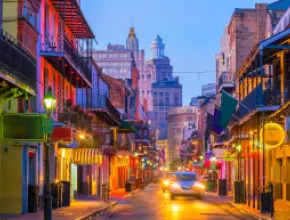MIAMI
The Miami Beach Convention Center announced it will feature a state-of-the-art sustainable design and eco-conscious operational procedures when it reopens in 2018. More than a $615-million construction project, the development of the Miami Beach Convention Center is said to represent the destination's engineering commitment to combatting, and understanding, the impact of climate change and sea level rise. The Miami Beach Convention Center is on track to receive LEED Silver certification upon being fully open in 2018.
“The Miami Beach Convention Center project reflects our commitment to not only being a world-class destination for meetings/conventions and events, but a home for some of the most advanced environmental thought leadership and sustainable technology,” said Greater Miami CVB President & CEO William D. Talbert, III.
Following are some sustainable highlights of the project.
Sustainable Design Decisions
A renovation and expansion—as opposed to a new build—requires creative design and savvy technology to maximize sustainability. One of the development’s most impactful contributions to the destination will be the significant landscaping surrounding the convention center.
Providing greenspace for convention attendees and locals, the six acres of trees and greenery will also aid in cooling the area and improving air quality (and will replace more than six acres of asphalt). More than 200 trees at the site are being saved and replanted when the convention center debuts next year, in addition to 300+ new trees. The showpiece of the tree-space will be the Strangler Tree, a specimen tree that the convention center’s Grand Ballroom’s pre-function and outdoor space have been carefully designed around.
One of the building’s most striking design elements are the dramatic fin-like structures that line the side of and entrance to the building. In addition to being architecturally impactful these fins will offer shade to reduce heat load indoors. This fin design plus lighting modifications—including bay lighting to take advantage of natural sunlight, high-efficiency units and LED bulbs—will result in a 20 percent reduction in energy use.
The Miami Beach Convention Center will install solar panels above the parking areas, complete with electric-car charging stations, before completion of renovations.
Sourcing & Recycling
The Miami Beach Convention Center said a central focus of its sustainability efforts is both taking from and giving back to the local community. More than 20 percent of the materials used in the renovation have been locally sourced within Miami and Florida.
As the convention center nears its 2018 reopening, the site continues to sort more than 95 percent of construction waste for recycling, and has thus far diverted more than 38,000 tons of waste to recycling. Green, compostable service items (from plates to forks) are being used for both current and future meetings, while food waste programs have also been put in place to donate as much food product as possible to nonprofits.
The convention center will also continue to collect and donate leftover paper and writing utensils to local Miami schools. And opportunities abound already for meetings and associations to take part in the destination’s commitment to preserving and giving back to the local community, such as group beach cleanups.
Water Management
A central challenge and benefit of the Miami Beach Convention Center is its location near the Miami International Airport and mere blocks from the beach and Atlantic Ocean. At the forefront of the sea level rise discussion, the destination has taken into account preparing the site for the potential impacts of climate change. All critical systems in the convention center will be located on the second floor of the building, which is higher than standard second floors due to the raised-base elevation of the entire site.
Water management is critical to the site’s design—from pump stations to manage storm water to low-flow, high-efficiency units to reduce the amount of waste water generated. Even the convention center’s cleaning products are water-conscious, with a system that turns waste water into product.





